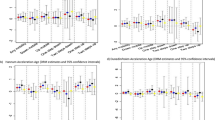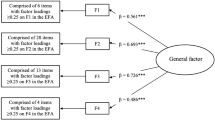Abstract
THE specific effects of population pressure on the quality of everyday life should be of pressing social and policy concern; and although population studies have proliferated in the behavioural sciences, research has focused primarily on fertility-related behaviours1,2. Moreover, the few social scientists interested in the relationship of the numbers of humans to individual human behaviour have been puzzled by a dearth of clear-cut effects3. This study reports preliminary analyses from a larger cross-cultural investigation of the quality of life. Following a suggestion from Lowin et al.4, we have systematically observed the rates of pedestrian locomotion over a constant distance in 15 cities and towns in six countries in Europe, Asia and North America. The results of these observations indicate that pace of life varies in a regular fashion with the size of the local population, regardless of the cultural setting.
This is a preview of subscription content, access via your institution
Access options
Subscribe to this journal
Receive 51 print issues and online access
$199.00 per year
only $3.90 per issue
Buy this article
- Purchase on Springer Link
- Instant access to full article PDF
Prices may be subject to local taxes which are calculated during checkout
Similar content being viewed by others
References
Bartz, W. R., Am. Psychol., 25, 500 (1970).
Fawcett, J. T. (ed.), Psychological Perspectives on Population (Basic Books New York, 1973).
Lawrence, J. E. S., Psychol. Bull., 81, 712 (1974).
Lowin, A., Hottes, H. A., Sandier, B. E., and Bornstein, M. H., J. soc. Psychol., 83, 247 (1971).
Wirth, L. J., Am. J. Soc., 44, 1 (1938).
Freedman, J. L., in Psychological Perspectives on Population (edit. by Fawcett, J. T.), 234 (Basic Books, New York, 1973).
Carnahan, D., Grove, W., and Galle, O. R., Soc. Forces, 53, 63 (1974).
Stokols, D., Psychol. Rev., 79, 275 (1972).
Desor, J. A., J. Personality soc. Psychol., 21, 79 (1972).
Milgram, S., Science, 167, 1461 (1970).
Zajonc, R. B., Science, 149, 269 (1965).
Author information
Authors and Affiliations
Rights and permissions
About this article
Cite this article
BORNSTEIN, M., BORNSTEIN, H. The pace of life. Nature 259, 557–559 (1976). https://doi.org/10.1038/259557a0
Received:
Accepted:
Issue Date:
DOI: https://doi.org/10.1038/259557a0
This article is cited by
-
Walking behaviour and safety of pedestrians at different types of facilities: a review of recent research and future research needs
SN Social Sciences (2022)
-
Effect of Wuhan’s anti-COVID-19 lockdown on its pace of life and metaphorical temporal perspective
Culture and Brain (2022)
-
Optimized hip–knee–ankle exoskeleton assistance at a range of walking speeds
Journal of NeuroEngineering and Rehabilitation (2021)
-
Walking is regulated by environmental temperature
Scientific Reports (2021)
-
Vigour of self-paced reaching movement: cost of time and individual traits
Scientific Reports (2018)
Comments
By submitting a comment you agree to abide by our Terms and Community Guidelines. If you find something abusive or that does not comply with our terms or guidelines please flag it as inappropriate.



